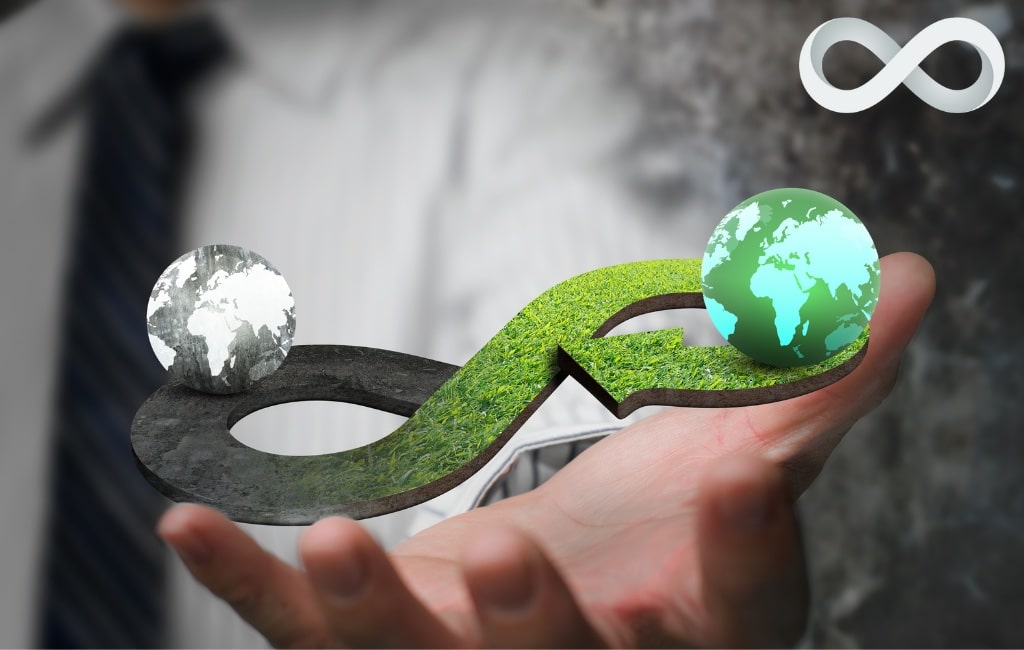Understanding the concept of convenience is the key to successfully engaging customers in a circular economy…
Debunk convenience to get circular economy moving

Debunk convenience to get circular economy moving
Understanding the concept of convenience is the key to successfully engaging customers in a circular economy…

Meet the author
Nellie Salter is a Research Assistant with the University of Exeter working in the field of Circular Economy. She consolidated her sustainable business knowledge through the Exeter MBA, during which she focused on waste management, reuse, and circular business models. She has developed expertise on consumer roles in the circular economy with an aim to enable circular businesses to thrive.
In our busy world, convenience is a high priority for customers, together with cost and quality. But often convenience comes with waste; whether it’s single-use plastic containers, supermarket packaging, vehicle emissions, or other by-products.
Waste is a global problem. As governments tackle landfill and recycling issues, businesses and consumers are being asked to play their part by buying circular products and services such as choosing car shares, reusing packaging, and refurbishing items to help reduce waste.
But these products and services often require new or unfamiliar steps for the customer, such as learning how to rent an item they normally buy, remembering to return containers to supermarkets to be refilled, or walking to pick up a hire car instead of driving the vehicle we own off our drives.
The drivers of convenience are not what they seem
It is true that these extra steps take time and can be perceived as inconvenient. But here is the interesting question: do customers choose convenience only to save time, or is there more to it? By better understanding what convenience means to customers, we will be able to address people’s needs and, therefore, contribute to solving the world’s waste problems.
Research carried out in Switzerland showed that it is easy to assume the biggest driver for someone buying convenience food (ie. ready-made meals or pre-packed items) is they are time-poor (1). This is certainly one of the drivers, but the research showed that the drivers of convenience aren’t the same for everyone. You might choose convenience food if you live on your own, you live in a certain area, you have poor cooking skills or it might simply be cheaper to buy a ready meal rather than all the ingredients needed to cook a meal from scratch. In fact, this research shows that there are many lifestyle factors that contribute to people’s idea of what is convenient for them.
Reframing convenience
Choosing to buy a circular product or service requires a shift in mindset and behaviours. Remembering to take reusable plastic bottles back to the supermarket to be refilled isn’t always easy. Finding the location of a car share on an app and walking to find it is more onerous to some of us than picking up your keys and walking out to the drive. However, what if we reframe convenience in this situation – car repairs and maintenance are inconvenient, as is owning a machine that depreciates in value while it sits on the drive.
The point is, if we are going to reduce waste, we need to shift our mindsets and accept there needs to be a new normal. So, the question is, how can businesses make these new journeys more convenient for consumers and acceptable as a new normal? The answer lies in businesses
- designing solutions that minimise the amount of time and effort (physical and psychological), known as consumption work, that people must do when adopting circular solutions
- articulating the convenience tradeoffs between behaviours in the old linear world and the new circular one, and how this generates a positive impact on the planet.
If customers want to select a circular product at a supermarket, for instance, the store can help by providing a direct comparison between linear and circular options. For example, a sign that compares the cheaper price of purchasing oats in a refillable container instead of a pre-packaged box, rather than expecting the customer to do the work themselves. Understanding how sustainable an item is requires time and effort on the part of the consumer and can be confusing even for the most eco-conscious person.
Incentivise the consumer
Producers need to recognise that they may be asking more from their consumers than they are used to. Where tasks and behaviours are new or unfamiliar, consumers may need incentives to take part in the circular business models.
Aldi is a market leader in this space. Its research has shown that customers are motivated by lower prices, but the comparison is not always clear in some cases. By guaranteeing a refill will always be cheaper than the pre-packaged item, they have both incentivised their customers to try refill offerings and helped to reduce the mental effort of comparing prices. This is the kind of convenience supermarkets need to think about when designing circular offerings. Incentives can also be purpose-related by helping customers measure and track the positive impact they are having by choosing a circular product.
Ikea is another business that is leading the way on the journey towards a circular economy. They have announced ambitious circular targets and are embedding a mindset shift in the organisation to make zero waste, and designing for easy product life extension with new standards. For example, by creating products that are modular, standardised and designed for repair, reassembly and refurbishment, the convenience element comes in by being able to have a home that looks nice without needing to get rid of furniture and buy new items. By launching a circular hub online store, they are reinforcing the value of circular products by incentivising customers to take care of their furniture so that it still has a retail value once they no longer need it. These online marketplaces offer low effort and familiar solutions for customers to conveniently recover some value from their furniture and play their role in product life extension.
So, how should organisations proceed if they are keen to engage in the circular economy? Here are a few recommendations:
-
- Spend extra time designing the touchpoints in your circular journeys, in particular, touchpoints with new or unfamiliar tasks and behaviours.
- Convenience is a multi-layered concept that involves physical and psychological effort and has a lot to do with customer lifestyle. Don’t make assumptions about what is convenient or inconvenient for your customers; do your research.
- Develop a clear understanding of both behaviours and motivations across your customer segments. If you are expecting your customers to behave in a way that they may find inconvenient, it is important to tap into their motivations and offer an appealing incentive for them to engage in your circular journey.
To learn more about our customer experience transformation and sustainability consulting services and find out how we can help you on your circular economy journey, get in touch.

